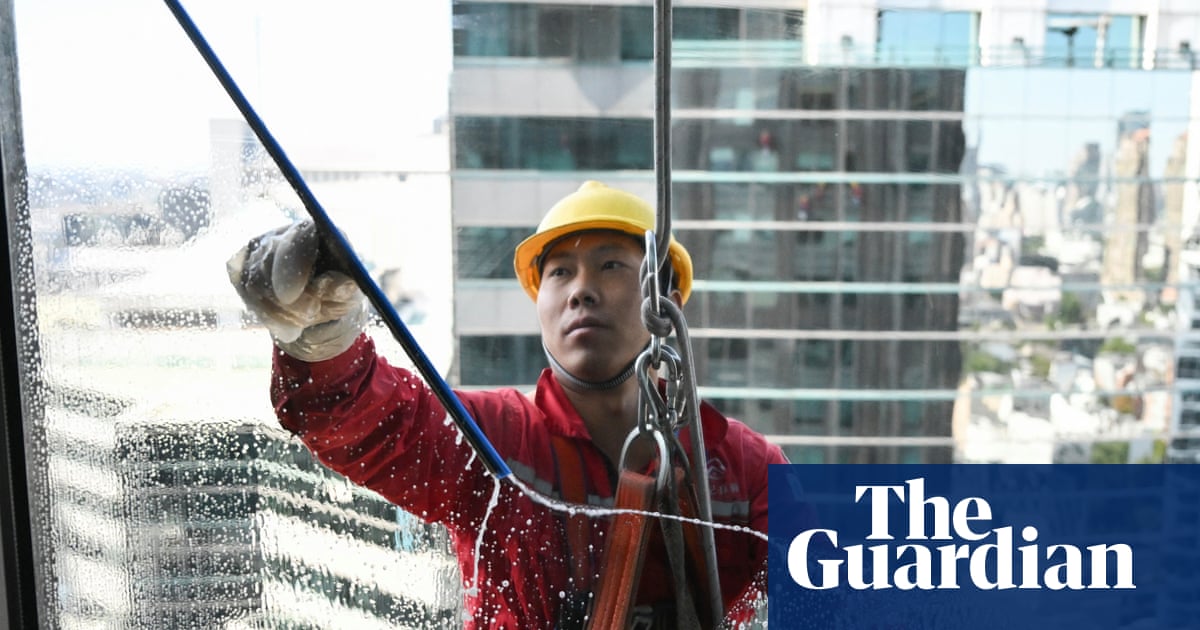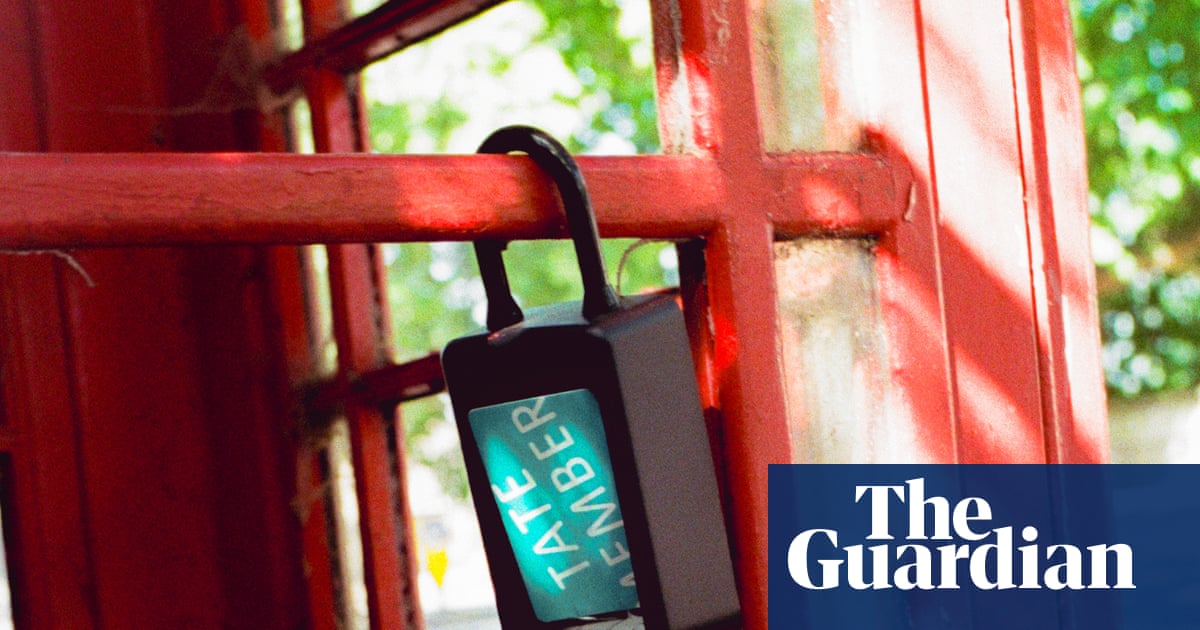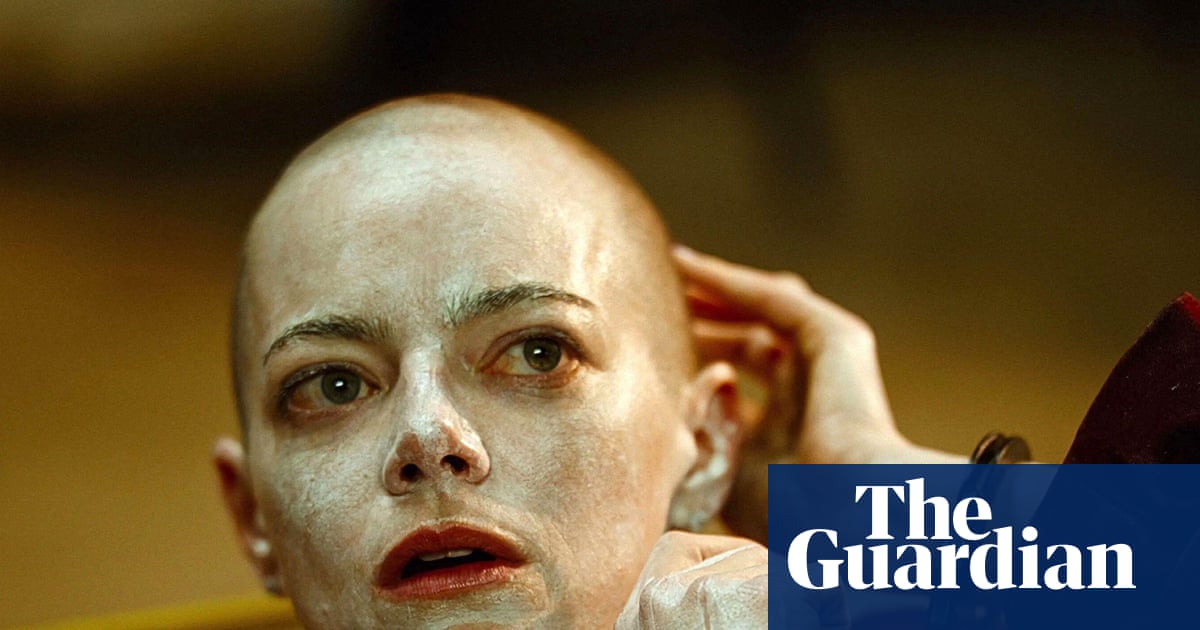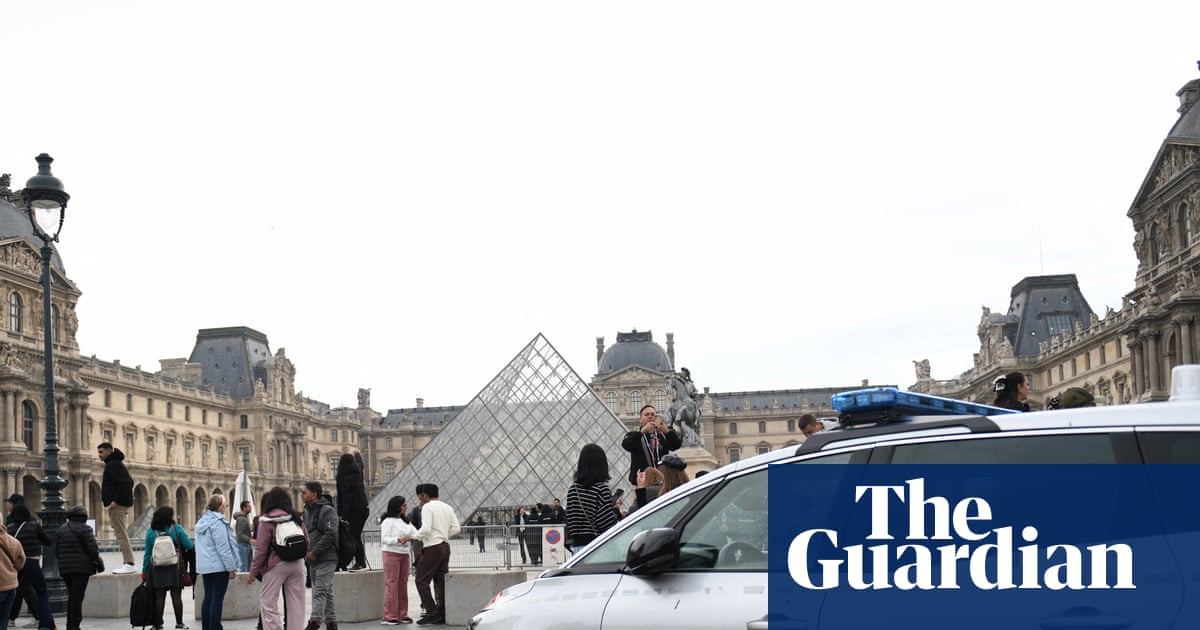Athleticism, power and ceremonial splendour were all on display at London’s Albert Hall last week as sumo wrestling returned to the storied venue for the first time in 34 years. The ancient Japanese sport has roots tracing back more than 1,500 years, but this was only the second time that a major event had been hosted abroad. It was a remarkable spectacle both inside and outside of the sacred dohyo ring.
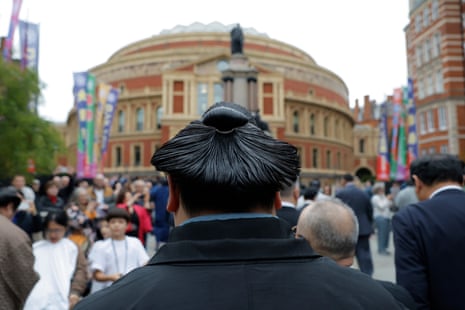
Big in London
-
A sumo wrestler, wearing the traditional topknot hairstyle called the oicho, pictured outside the Royal Albert Hall.
Before the start of the five-day Grand Sumo Tournament, the wrestlers, known as rikishi, visited several London landmarks dressed in their silk kesho-mawashi robes. They also posed for official portraits with their hair tied in traditional topknots, called oicho, and showcased their remarkable appetites. Each sumo – some of whom weigh upwards of 180kg – consumes up to 10,000 calories per day, including almost 2kg of rice.
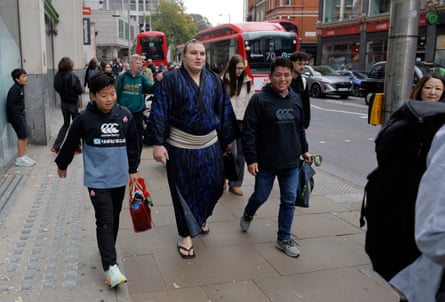
-
Aonishiki, who fled from war-torn Ukraine to be a sumo wrestler in Japan, walks down Kensington high street with fans as he goes for lunch near his hotel.
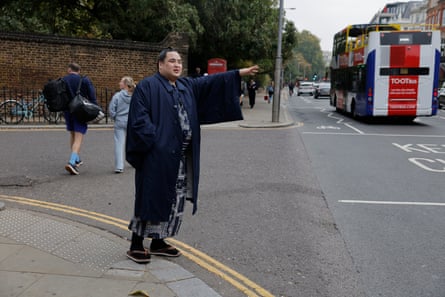

-
Left: a rikishi tries to hail a cab near his hotel at Kensington Gardens. Right: wrestlers and representatives from Sumo Kyokai are photographed on the south steps outside of the Royal Albert Hall.
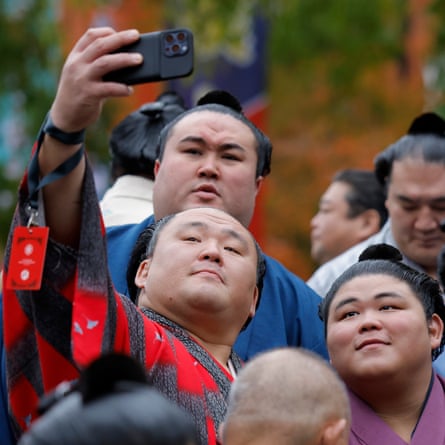
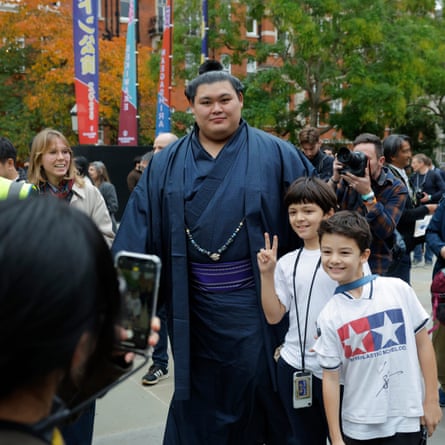
-
Left: the veteran sumo wrestler Tamawashi, who is 40 years old, takes a selfie with Hakuoho on the south steps outside of the Royal Albert Hall. Right: Onosato is stopped by fans for a photo as he walks to the Royal Albert Hall.
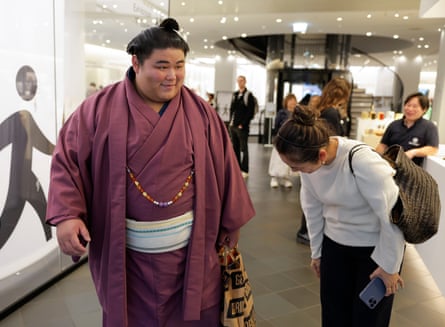
-
Hakuoho Tetsuya is greeted by members of the public in Japan House on Kensington high street.

-
Dairaido (left) laughs with fellow rikishi Oginosho before eating a traditional hearty Japansese broth of chankonabe.
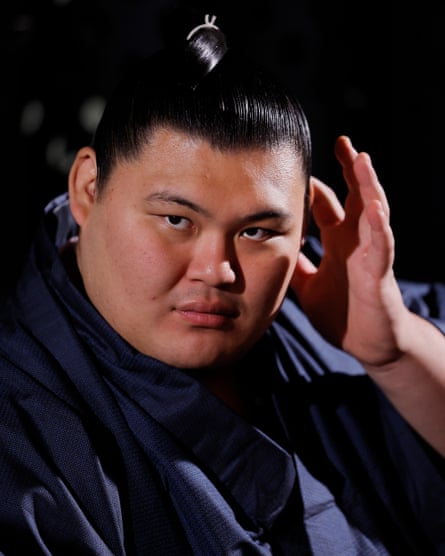
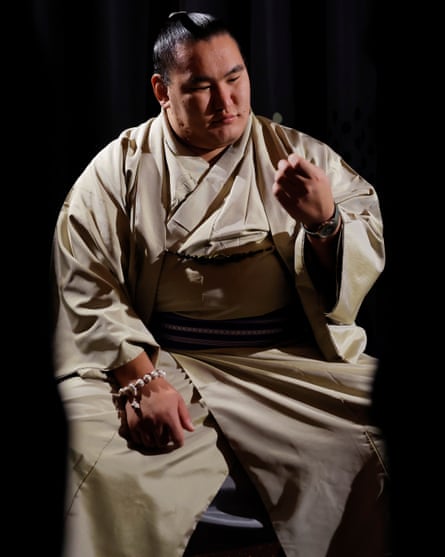
-
Left: Onosato, one of two current yokozuna, the highest level of sumo wrestler, during a visit to the top of the Royal Albert Hall. Right: Hoshoryu, the other yokozuna, rests on a chair during a round of interviews in the Royal Albert Hall.

-
Hakuoho Tetsuya has his hair put in the traditional topknot as part of a demonstration held at Japan House.
______________________________
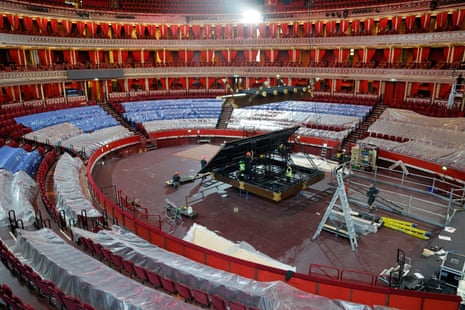
Preparing the dohyo
-
The yakata is assembled on the floor of the Royal Albert Hall.
The sacred sumo wrestling ring is called a dohyo. It is a five-metre wide platform and its construction combines centuries-old tradition with precise engineering. It requires 11 tonnes of soil, plus sand and cement. The surface is pounded with wooden mallets, creating its characteristic texture. Straw bales, known as tawara, mark the boundary of the ring. These bales are hammered into shape using old Asahi beer bottles. Above the ring is a canopy, known as the yakata, which is modelled after the roof of a Shinto shrine. All the elements are carefully constructed by full-time employees known as yobidashi.
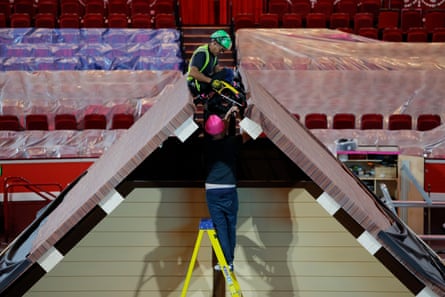
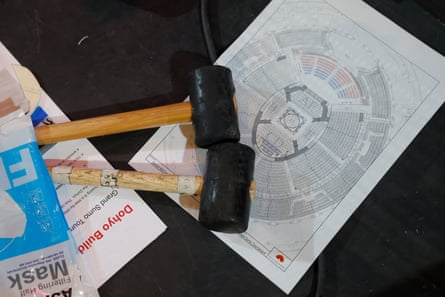
-
Left: Yobidashi construct the stage. Right: plans for the dohyo.

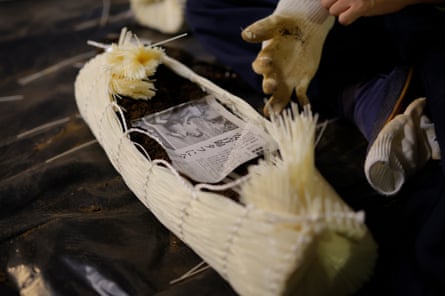
-
Left: in the loading bay of the venue, yobidashi make the tawara (straw bales) which mark the boundary of the sumo ring. Right: a close-up of the tawara.
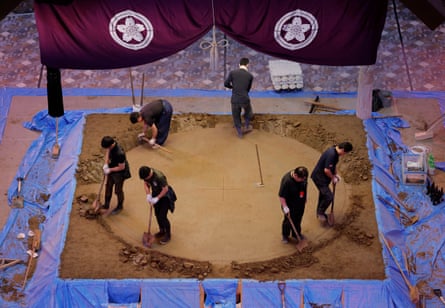
-
Yobidashi dig a shallow trench around the outside of the ring before dropping in the tawara.

-
A yobidashi wields a used Asahi beer bottle to hammer the tawara into place.
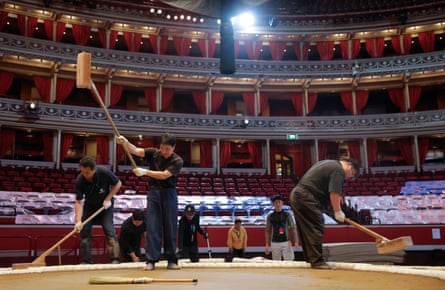
-
Yobidashi performing tataki (pounding) with wooden mallets to compact the soil, clay and cement mixture as they help prepare the dohyo.
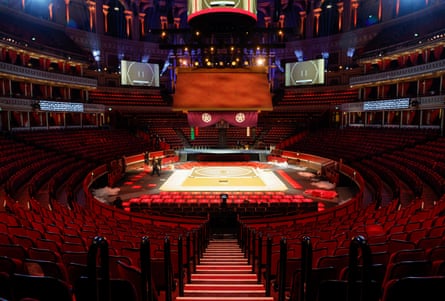
-
Workers laying out the cushions on the floor around the dohyo.
______________________________
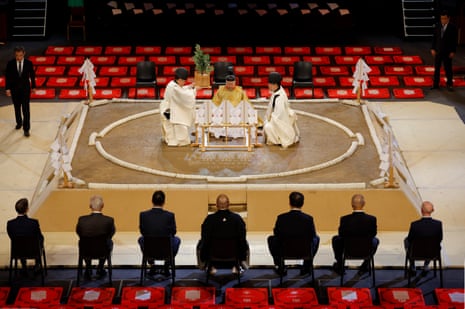
Ritual and ceremony
-
The dohyo-matsuri (ring blessing ceremony) taking place in the centre of the Royal Albert Hall before the start of the tournament.
Sumo is a sport packed with rituals, from a special blessing ceremony before the tournament in which referees pour sake, chestnuts, salt, rice and dried squid or cuttlefish into a hole at the centre of the dohyo, to the iconic leg-stomping of the sumo wrestlers as they try to ward off evil spirits before each bout. Salt is also thrown by the wrestlers to cleanse and purify the arena, creating a glittering effect under the spotlights.
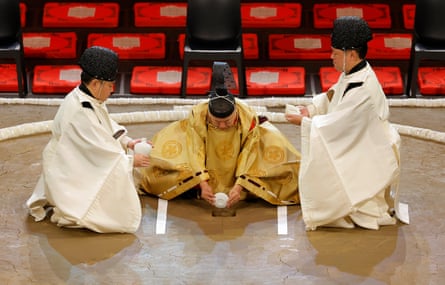
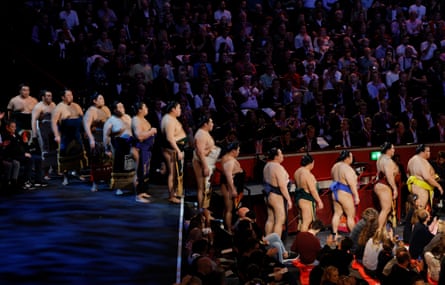
-
Left: the gyoji (referees for the tournament) pour sake into the blessing hole. Right: the rikishi come out for the dohyo-iri, the ring-entering ceremony performed every day before competition starts.

-
A sacred rope called the tsuna-jime is tied around one of the wrestlers. This ritual is not often seen by the public during tournaments in Japan.
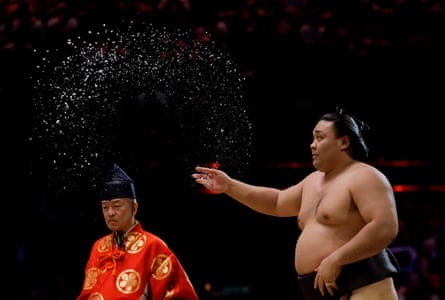
-
Kirishima throws salt to cleanse and purify the dohyo before his victory over Ono.
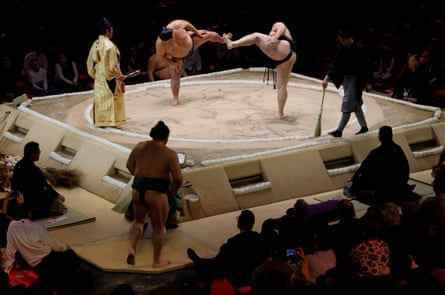
-
Before they fight, two rikishi perform the thunderous shiko, or leg-stomping, intended to drive away evil spirits.
______________________________
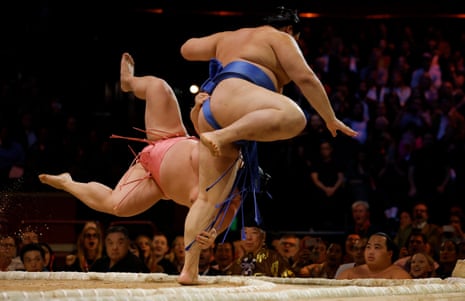
Fighting with spirit
-
Onosato throws his opponent, Ura, out of the ring.
A sumo match begins when the referee shouts hakkeyoi, which loosely means “fight with spirit!” The competitors must then grapple, push, slap and propel one another outside the ring, often using one another’s sumo belts (mawashi) for leverage. The loser is the first wrestler to touch the ground with any part of his body other than his feet, or the first to be thrown outside of the ring’s perimeter. Spectators sitting on ringside cushions were forewarned by the event’s organisers that they did so entirely at their own risk. The venue even took out additional insurance to cover the possibility of a rikishi landing on and injuring someone ringside.
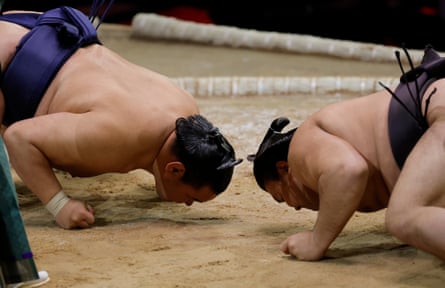
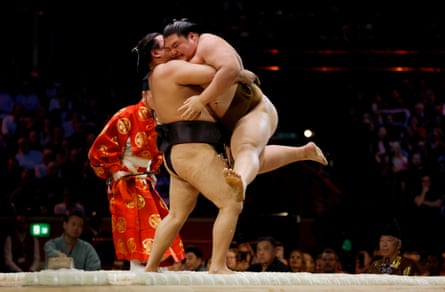
-
Left: Hoshoryu (left) and Kirishima try to intimidate each other as they face up just before starting their bout, which Hoshoryu won. Right: Oho kicks his feet as he is picked up and carried out of the ring by Kirishima.
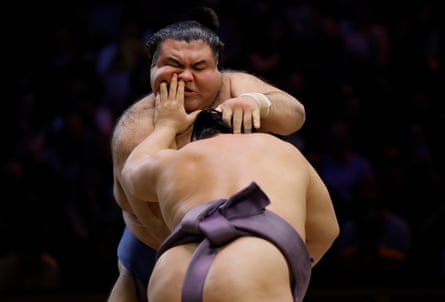
-
Tobizaru sticks a finger up the nose of Takayasu during a bout.

-
The crowd watch the action on day one.
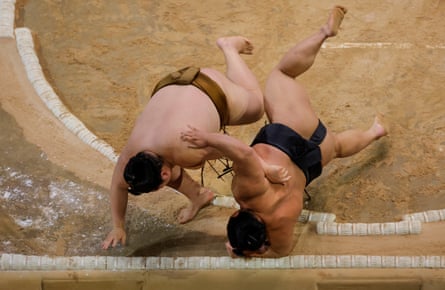
-
Osho (left) and Hakuoho (right) throw each other out of the ring at exactly the same time. After a judges’ consultation they decided it was a tie and ordered an immediate rematch.

-
Onosato greets fans as he walks back to the dressing room after beating Gonoyama.
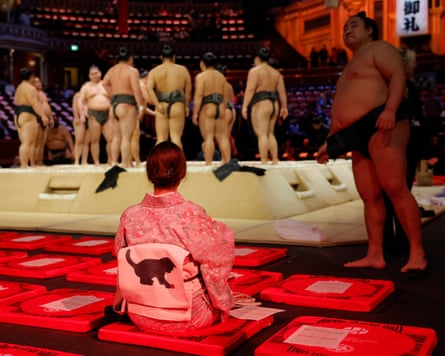
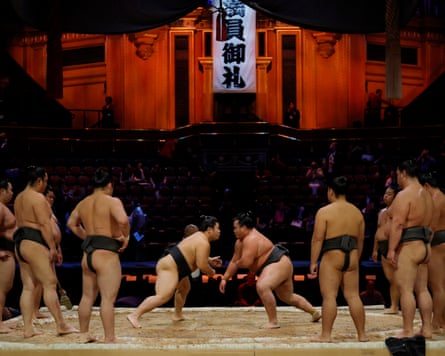
-
Left: a spectator gets to her specially designed ringside cushion early to watch a stable of young fighters practising. Right: young fighters practise on the dohyo.
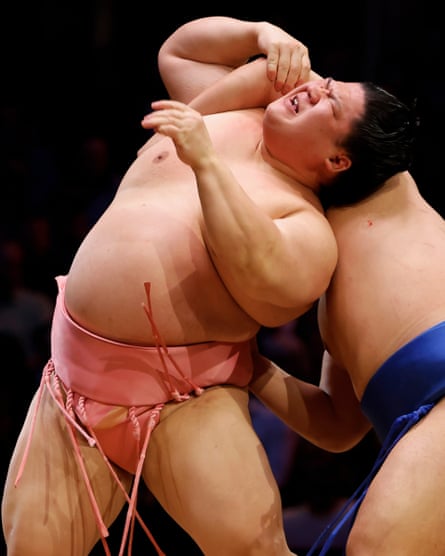
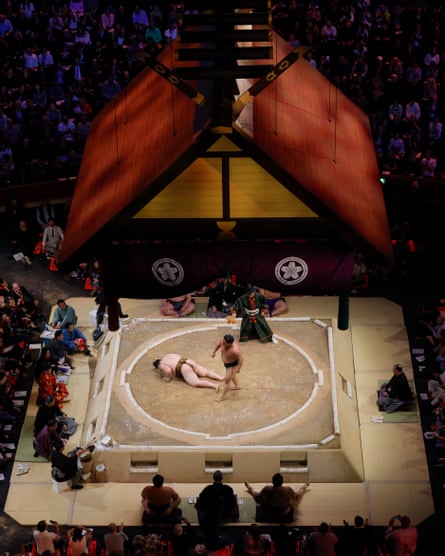
-
Left: Ura (left) seems in pain but goes on to beat Fujinokawa in their fight. Right: Osho is thrown to the floor by Hakuoho in their rematch after the first bout was ruled as a draw.

-
Two fighters clash during their bout.
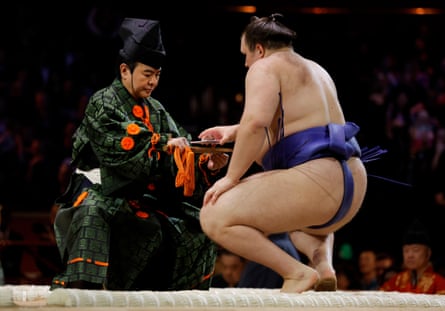
-
Aonishiki, the 21-year-old Ukrainian who fled from his war-torn country, picks up his prize money from the referee’s fan. The envelope contains a 10,000 yen banknote (approx £50).
______________________________
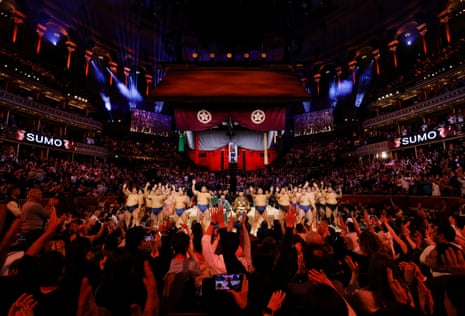
The finale
-
Huge applause from the crowd on the final day as all of the competing rikishi come out to say thanks at the end of the tournament.
In the history of sumo wrestling there have only been 75 yokozuna – the highest rank of sumo – two of whom are currently active: Hoshoryu Tomokatsu and Onosato Daiki. Predictably, after each winning their previous four fights, they faced off in the final bout at the Albert Hall, with Hoshoryu, who hails from Mongolia, winning the contest by pushing his larger opponent out of the ring. The tournament then concluded with all 40 sumo wrestlers bidding an emotional farewell to the London crowd.
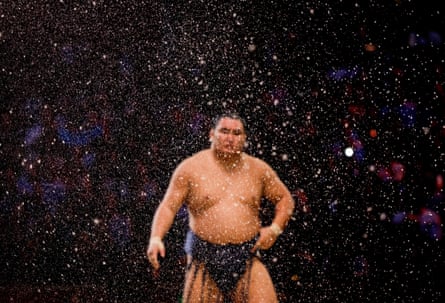
-
Hoshoryu throws salt before his match with Onosato.
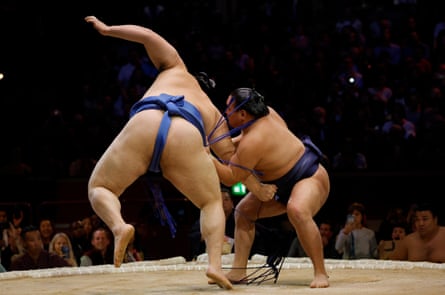
-
Hoshoryu (right) wins the battle of the yokozunaa by forcing Onosato out of the ring with a rear push-out.
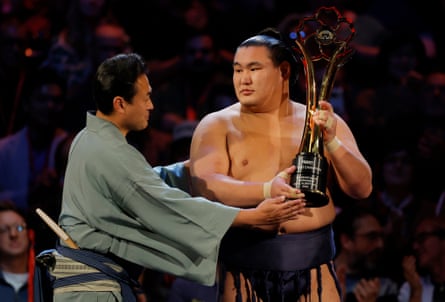
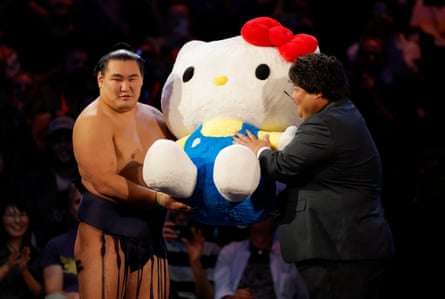
-
Left: Hoshoryu holds up the trophy for winning the tournament. Right: Hoshoryu is given a huge fluffy Hello Kitty toy.
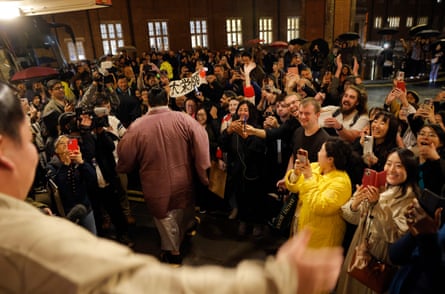
-
Fans greet the rikishi as they leave the stage door of the Royal Albert Hall.

 4 hours ago
8
4 hours ago
8


